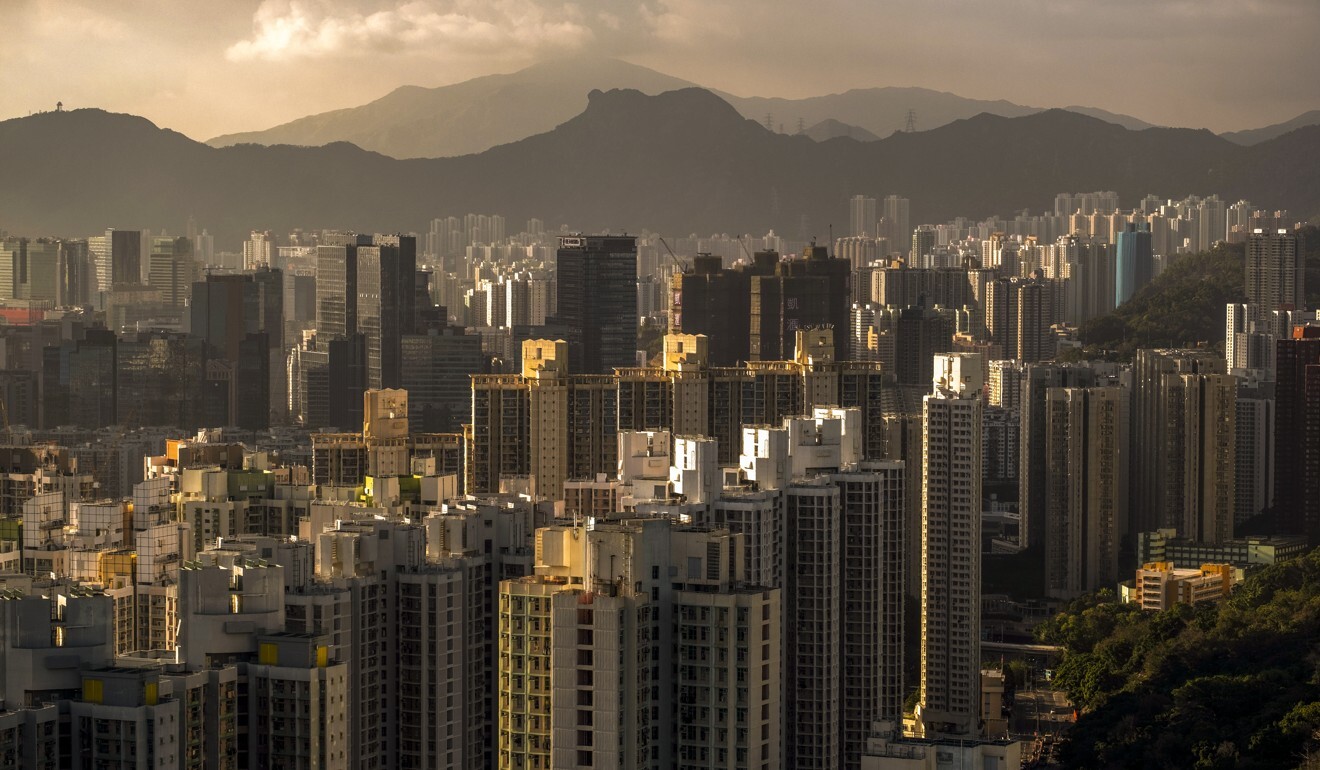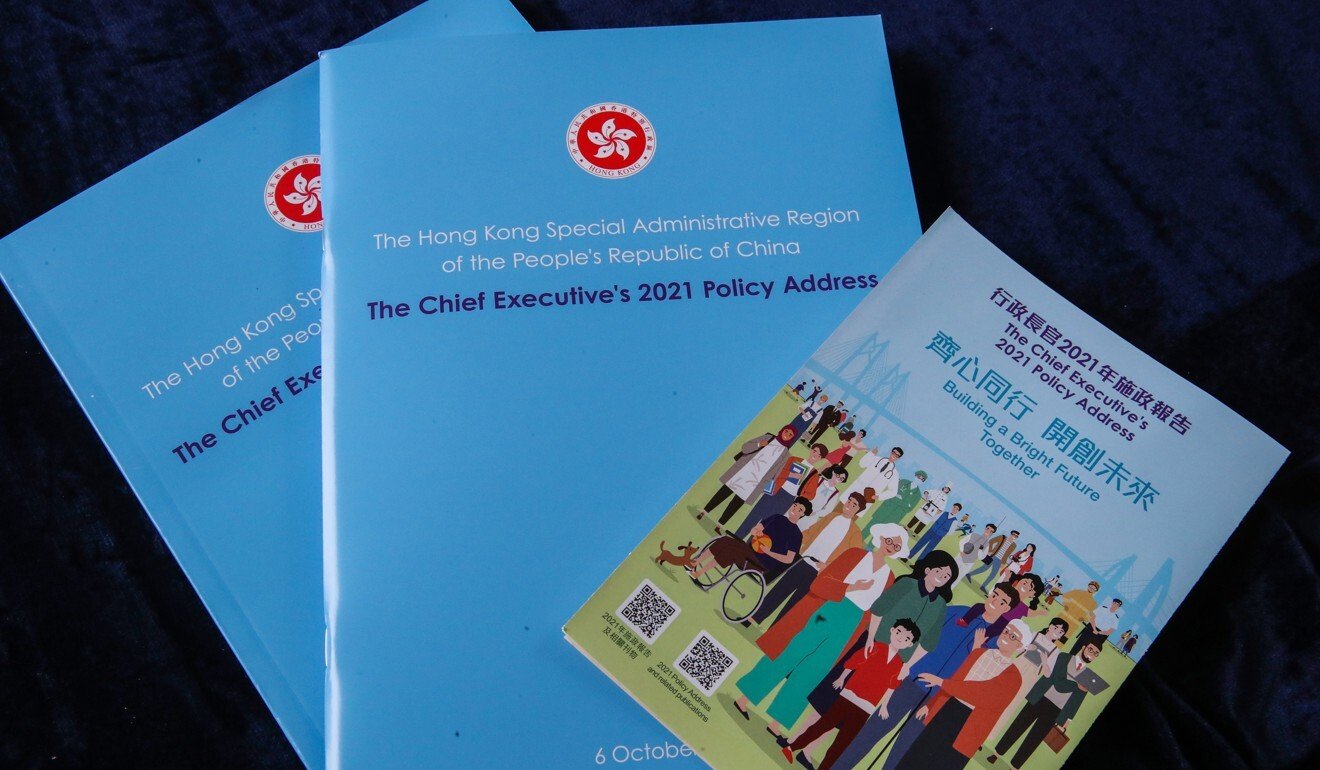
6 takeaways from 2021 Hong Kong policy address: from a new metropolis to Carrie Lam conducting national security classes
- Long-term implications abound in address Lam promised would be ‘visionary’, though advisers say that’s no indication of whether she’ll seek second term
- Some key elements of address, widely believed to be in line with Beijing development goals, will fall to next administration to carry out
This article has been made freely available as a public service to our readers. Please consider supporting SCMP’s journalism by subscribing.
But while significant time was spent lauding her administration’s accomplishments to date, there were also substantial revelations – some with long-term implications – about where its focus will lie over the next six months.
Here are six key takeaways:
1. A Northern Metropolis
Lam announced that northern Hong Kong – a border area composed mostly of agricultural plots, wetlands and brownfield sites – would be developed into a “Northern Metropolis” that would serve as the city’s epicentre of growth over the next 20 years.
The plan is seen as key to the city’s integration with neighbouring Shenzhen and its development as an innovation hub as envisioned in Beijing’s latest national development plan.
Repackaged and expanded from an existing northern New Territories project, the ambitious blueprint covers 30,000 hectares (74,130 acres), including four existing towns and their neighbouring rural areas, as well as six new development areas now being planned or under construction.

Addressing the latter group’s concerns, Lam said about 2,000 hectares of land with ecological value would be conserved, while adding that the new blueprint and other measures would be able to make up a 3,000-hectare shortfall of land forecast for the next three decades.
Once fully developed, the Northern Metropolis would contain up to 926,000 residential units – including the 390,000 that currently exist – providing a home for 2.5 million residents, she said.
The new project would appear to take precedence over Lantau Tomorrow Vision, Lam’s controversial brainchild of three years ago which aims to create 1,200 hectares of artificial islands to the west of Hong Kong.
The Lantau scheme has been criticised by some as too long-term a venture to quickly serve the city’s housing crunch. But Lam on Wednesday said plans for the older scheme would continue and complement the new plan.

2. Security class is in session
Noting the new “citizenship and social development” subject for secondary school students had a section on the “one country, two systems” principle, Lam proposed conducting classes for educators on her office’s proper constitutional role.
An attempt in 2003 to pass a similar bill was shelved after it sparked half a million people to take to the streets in opposition.

3. A government restructured
With less than six months before her term expires, Lam revealed a preliminary proposal to restructure the government. The plan, first hinted at last month, includes the creation of an overarching Culture, Sports and Tourism Bureau to consolidate the city’s culture portfolio and creative industries.
The tourism sector previously fell under the aegis of the bureaus of Home Affairs and Commerce and Economic Development.
The Transport and Housing Bureau, meanwhile, will be split into two agencies under the plan.
The move, Lam said, was aimed at allowing the former to place more focus on transport management and developing the city’s logistics and aviation industries, while the latter – yet to be officially named – would be freed up to rapidly increase land supply.
The newly expanded Innovation, Technology and Industry Bureau will help push forward the city’s “re-industrialisation” agenda – an attempt to develop new high value-added industries – while the Home Affairs Bureau will be reorganised into a Youth and District Affairs Bureau.
The changes, however, are unlikely to take hold until the next administration has taken the reins.
Lam said she would engage a variety of stakeholders in the coming months before drafting a detailed strategy she hoped would be considered for adoption by her successor.

4. The IT crowd
The government is putting its weight behind the city’s continued development as a technology hub, including a planned corridor that will stretch from the IT park now under construction at the Lok Ma Chau Loop to San Tin and to another facility on the scale of Pok Fu Lam’s Cyberport at Lau Fau Shan in the northwestern New Territories.
To allow for the creation of this new “technopole” – a cluster of hi-tech and information-based companies – the government is freeing up about 240 hectares for development.
Another focal point will be the expansion of the existing science park at Pak Shek Kok with an additional 88 hectares of land – most dedicated to IT development – by resurrecting a reclamation plan for Ma Liu Shui and taking over the site of the Sha Tin Sewage Treatment Works, which will be relocated.
Lam also confirmed earlier Post reporting that an InnoLife Health Tech hub composed of more than a dozen labs would be part of the proposed San Tin technology park.
Handling the transport end of the equation is the MTR Corporation, which has been tasked with studying the feasibility of a new railway station at the site of Education University’s sports centre at Pak Shek Kok.
The development, part of the existing East Rail line that links Hung Hom with the northern New Territories, would be complemented with housing, parking spaces, shops and public facilities on adjoining land.
To attract talent, the quota for the city’s quality migrant admission scheme will also be doubled to 4,000 people annually.

5. Resuming developers’ wetlands?
As part of the Northern Metropolis plan, wetland near the internationally protected wetland sites around Mai Po will be conserved – this could include Fung Lok Wai and Nam Sang Wai, where CK Asset and Henderson Land Development have land respectively. Both developers have proposed low-rise eco-sensitive residential projects on their sites. But officials have not said clearly whether their sites will be resumed.
6. Re-election bid clues?
While Lam remained mum on whether she would seek another term, people were naturally looking for clues as to her plans within the policy address, which included several measures – notably the New Territories housing plan and government restructuring – that would inevitably fall to the next administration.
But while Lam’s address presented a long-term vision in line with the national development plan, Bernard Chan, a member of her Executive Council, said the initiatives were not intended to pave the way for her own re-election.
“Any [future] chief executive will have to deal with those issues,” he said.
Indeed, whether Lam will or can seek another term, some politicians believe that measures aimed at relieving the city’s housing woes and pushing innovation are likely to move forward regardless of who is in office.


